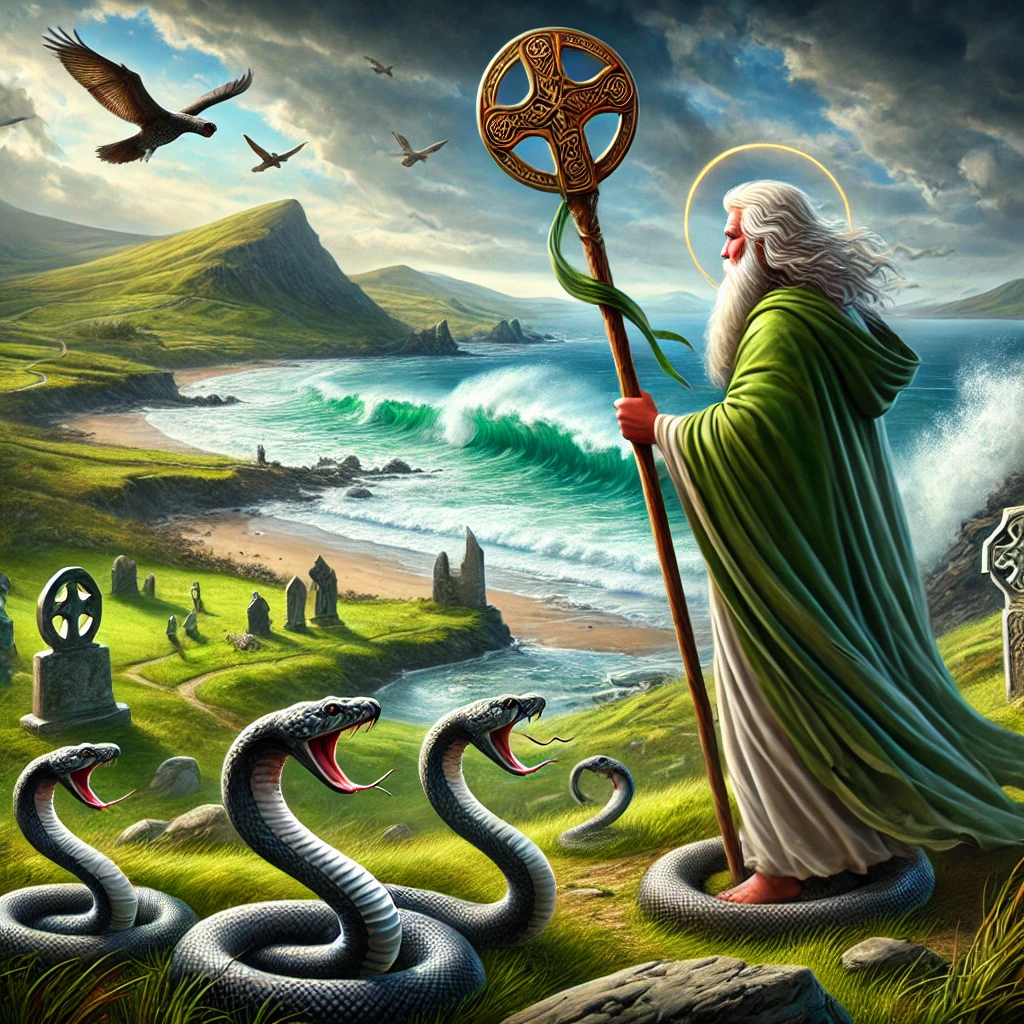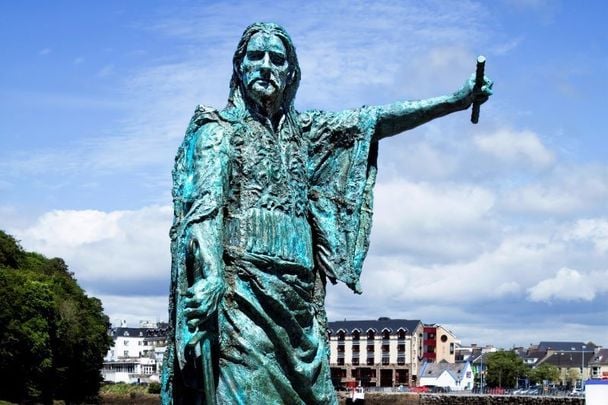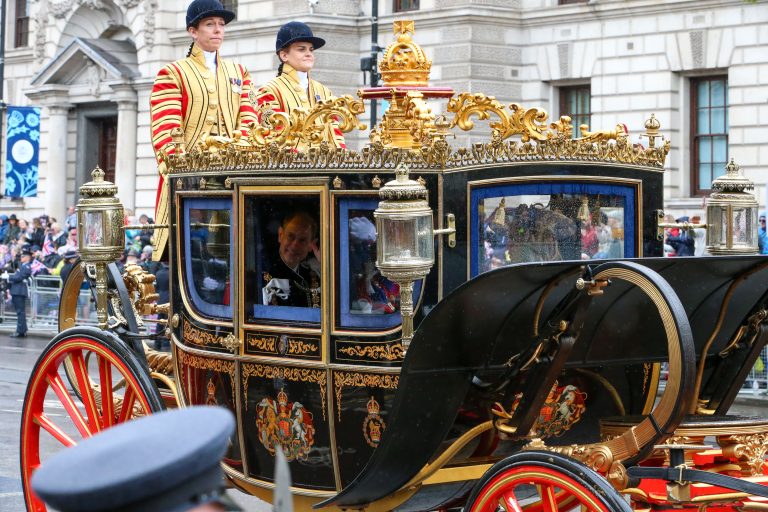
Ask any Irish child, and they’ll tell you the story with absolute certainty: St. Patrick drove the snakes out of Ireland. It’s a tale etched in the consciousness of a nation—a tale passed down in whispers beside hearths, etched in stained glass, and echoed in classrooms.
But what if the story isn’t about serpents slithering into the sea—but something deeper? Something older? Something that speaks not of reptiles, but of rituals, symbols, and the spiritual revolution of a land once ruled by druids and stones?
This is more than folklore. It’s myth as metaphor, poetry as history, and Ireland as its own parable.
For more on Ireland’s spiritual tapestry, explore Saint Patrick’s Breastplate – The Warrior’s Prayer That Shielded a Nation, Ireland’s Ancient Holy Wells of Saint Patrick, and timeless figures like Michael Collins, Dan Breen, The IRA Squad, Eamon de Valera, and Irish Immigration.
Did St. Patrick Really Drive Snakes from Ireland?
Let’s start with the blunt truth: There have never been snakes in Ireland.
That’s not a parable—that’s a fact. Ireland’s cold climate and isolation since the Ice Age has made it biologically inhospitable to snakes. Fossil records confirm it: no native snakes ever slithered through its forests or fields.
So why the story?
Because stories often say what facts can’t.
A Metaphor for Paganism?
Most scholars agree: the “snakes” Patrick drove out were not animals—but ancient beliefs.
In pre-Christian Ireland, the serpent was a symbol of spiritual power—used by druids, pagans, and mystics of the old ways. The myth of Patrick banishing snakes likely represents his mission to displace paganism and convert Ireland to Christianity.
The snakes weren’t flesh.
They were philosophy.
Patrick didn’t slay them with a staff—he displaced them with a new gospel, a new language, a new trinity carved in stone, sung in prayer, and whispered into wells.
Why Do People Still Believe the Story?
Because stories that blend symbol and soul live longer than mere truth. In a land where oral tradition outlived sword and famine, symbolism mattered more than biology.
Patrick was more than a preacher. He was a spiritual conqueror, a myth-maker, a figure who absorbed Ireland’s pagan spirit and re-birthed it in a new form.
And like all good myths, the snake tale survives because it speaks to transformation—the shedding of old skin for a new identity.
What Are 3 Symbols of St. Patrick That Connect to This Story?
- The Shamrock – Used to explain the Holy Trinity, it’s Ireland’s most enduring religious metaphor.
- The Serpent – Though absent biologically, it lives on as a symbol of what Patrick replaced.
- The Staff – His shepherd’s crook, with which he was said to drive away darkness and guide the people.
Together, they tell a story not of snakes, but of spiritual conquest, ritual repurposing, and cultural resurrection.
Is There Any Link Between the Snake Legend and Patrick’s Holy Wells?
Absolutely. Many pre-Christian holy wells were associated with serpent deities, earth spirits, and fertility rites. When Patrick arrived, he didn’t destroy them—he re-blessed them, reimagining their waters as Christian sanctuaries.
The snakes he “banished” weren’t always adversaries—they were reinterpreted, transformed into sacred echoes of a past now baptized.
Dive deeper into the sacred waters of Ireland with:
👉 Ireland’s Ancient Holy Wells of Saint Patrick
What Is the Spiritual Truth Beneath the Snake Myth?
The snake has always represented transformation, healing, and rebirth—even in ancient Irish myth. To drive out the snake was to drive out fear, superstition, and tribalism—and replace it with a faith built on unity, renewal, and grace.
St. Patrick’s myth is not about biology—it’s about symbolism that outlasts bone and skin.
The snake is gone—but the spirit that whispered through the grass still sings through the wells.
Final Thoughts: Truth, Legend, and the Power of Metaphor
So, did St. Patrick banish snakes from Ireland?
Not in the way science would define it. But in the way myth builds meaning, yes—he did.
He banished the old to welcome the new. He lifted water from wells, laid down prayer like armor, and turned serpent stories into spiritual shields.
If you want to understand Ireland, don’t just read its history. Feel its stories. Listen to its myths. Taste its metaphors.
Because in this land, truth wears poetry like a cloak, and Patrick’s staff still echoes on the stone.
Sláinte. Would you like a powerful image to accompany this story?





